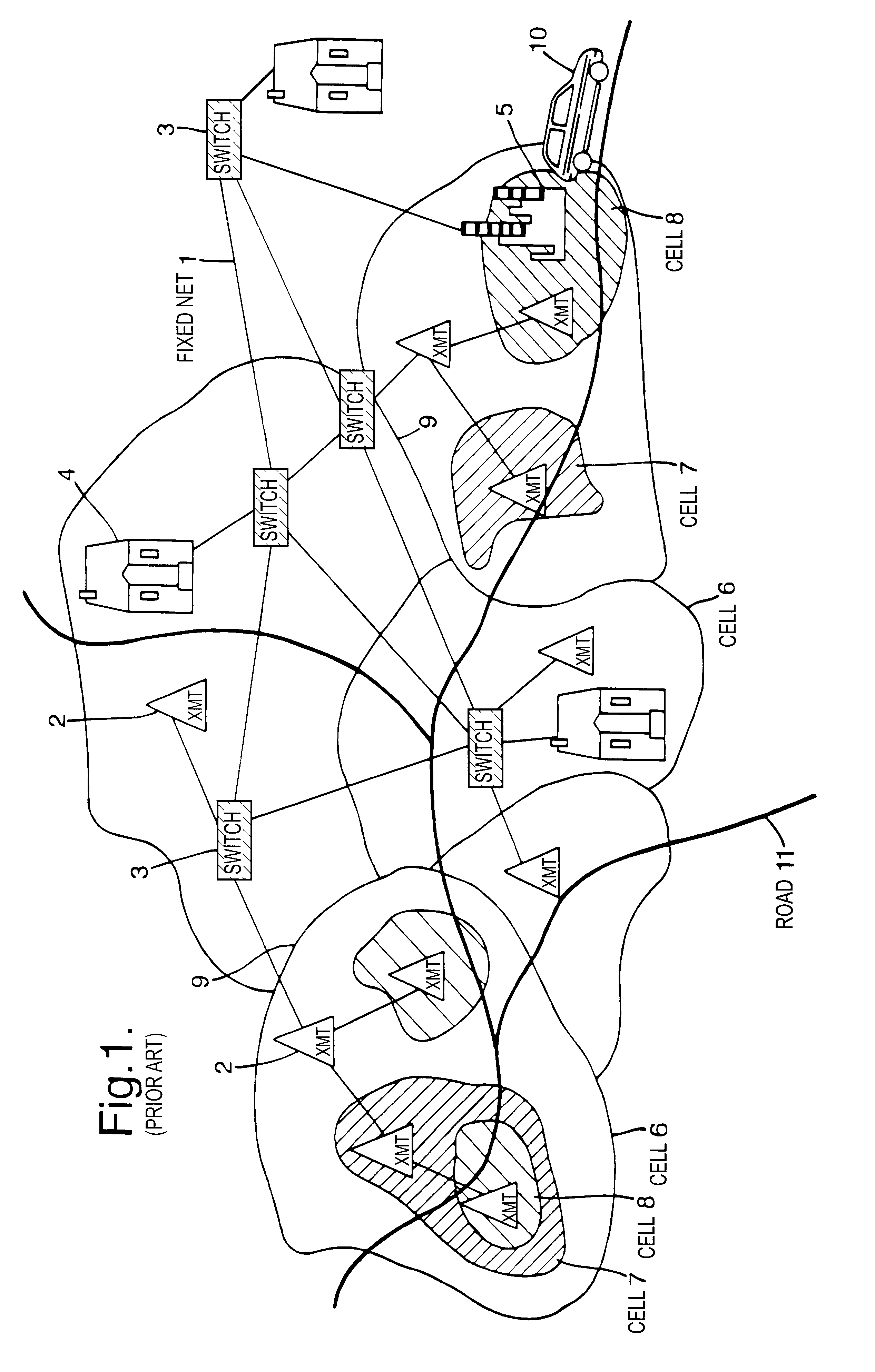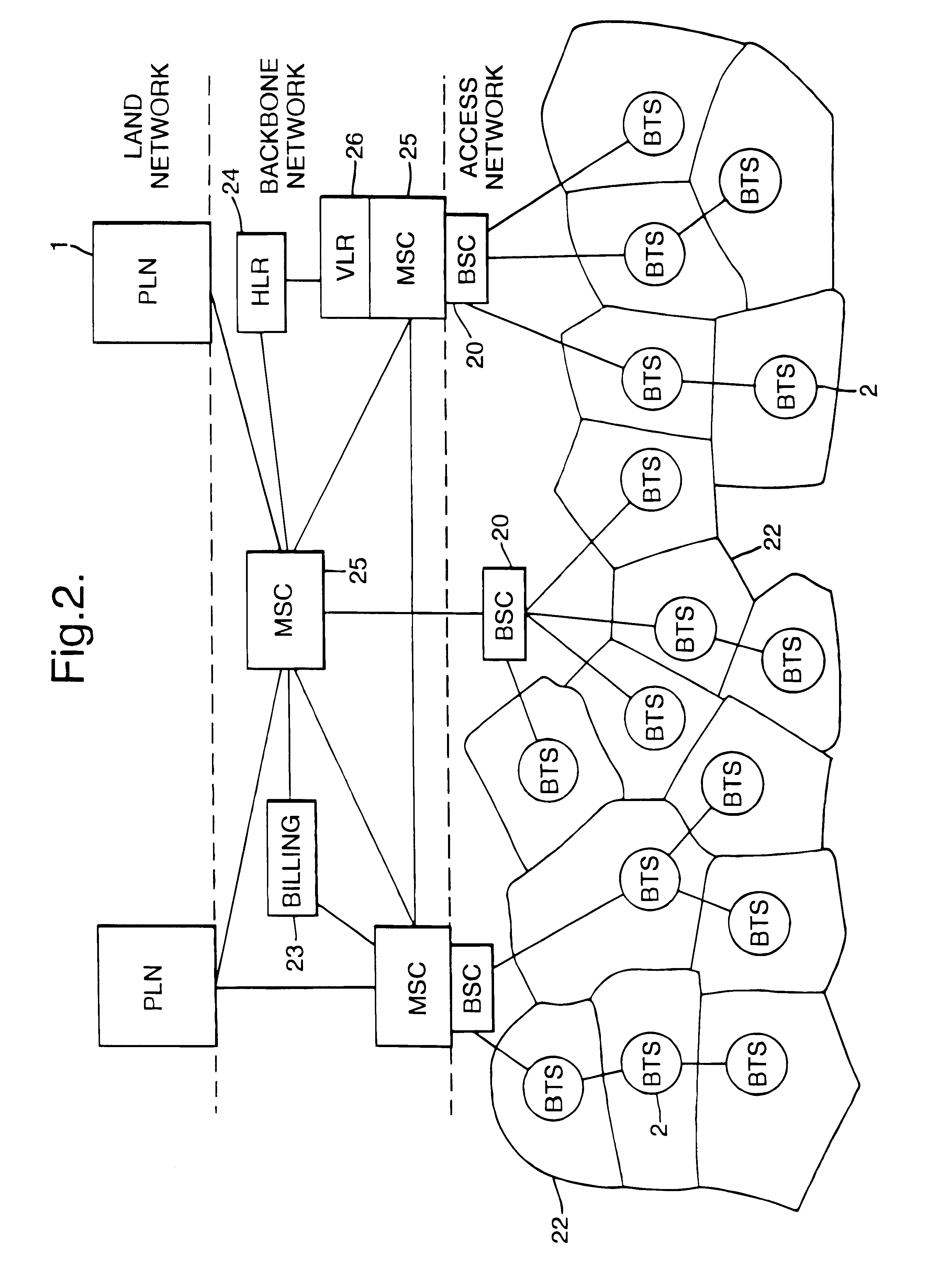Charging systems for services in communications
a charging system and communication technology, applied in the direction of wireless communication services, electrical equipment, wireless communication services, etc., can solve the problem of high demand, unprofitable use of resources, and high demand
- Summary
- Abstract
- Description
- Claims
- Application Information
AI Technical Summary
Problems solved by technology
Method used
Image
Examples
Embodiment Construction
Referring to FIG. 1, a cellular communications network is so called because communications are provided to a mobile user 10 from transmitters 2 which are distributed over the space through which the user might move, for instance by road 11. Each transmitter effectively creates a cell 6, 7, 8, within which the user 10 will receive communications from that one transmitter 2. As the user 10 moves, however, they are likely to move towards a different transmitter 2 until, at some point, the signal from the different transmitter becomes stronger than that from the original transmitter 2. At this point, the user 10 moves effectively into a different cell 6, 7, 8, now served by the different transmitter 2 instead of the original transmitter. This is known as "handover".
The transmitter 2 may provide the whole communication path between a user 10 and a far end connection point. However, for long distance traffic, the transmitter 2 is more likely to provide only a link from the mobile user 10 ...
PUM
 Login to View More
Login to View More Abstract
Description
Claims
Application Information
 Login to View More
Login to View More - R&D
- Intellectual Property
- Life Sciences
- Materials
- Tech Scout
- Unparalleled Data Quality
- Higher Quality Content
- 60% Fewer Hallucinations
Browse by: Latest US Patents, China's latest patents, Technical Efficacy Thesaurus, Application Domain, Technology Topic, Popular Technical Reports.
© 2025 PatSnap. All rights reserved.Legal|Privacy policy|Modern Slavery Act Transparency Statement|Sitemap|About US| Contact US: help@patsnap.com



